Improve Your Chipping With One Secret Move
The One Secret to Instantly Improve Your Chipping
Improve your chipping, lower your golf scores, and enjoy the game more with one simple chipping tip!
One of the easiest ways to improve your golf scores is to improve your chipping. I know we all love to hit the range and dive into our golf swings but we can not forget to work on our short game.
The largest separation between amateur and professional golfers outside of distance is their amazing short game skills (Putting, chipping and pitching). The short game is a great place for amateur golfers to start saving strokes. The more an amateur golfer can get up and down the better their scores are going to be!
Defining Chipping vs Pitching
Now it is important to understand the difference between a chip shot and a pitch shot. I am going to define a chip shot for this article to be a shot hit within ten yards of the pin. I pitch shot is any shot hit from ten to thirty wards away from the hole and generally goes a little higher than a chip shot.
Since the chip shot has been defined as a shot within ten yards of the hole, we can now talk about the different types of chip shots.
The first chip shot is a stock chip. A stock chip is a normal chip shot without messing with the effective loft of the golf club.
A bump and run is a low chip shot hit generally with a lower lofted club selection and runs out on the green more.
Finally, a flop shot is a high and soft shot created by adding a lot of effective loft to the club. This shot lands soft and does not roll out.
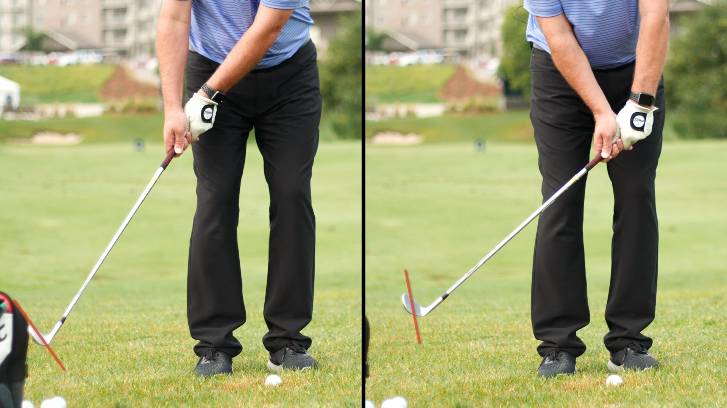
Unfortunately, chipping is also one of the most confusing and poorly taught skills in golf. If you’ve been struggling with your chip shots, it’s likely because you’ve been given bad advice. The good news is, it’s pretty easy to reverse bad habits. In fact, chipping is one of my favorite skills to teach, because once you understand a couple key ideas, the results come almost immediately.
I am going to share these game-changing insights with you, starting with this one central concept:
To hit a quality golf shot, you have to have effective loft.
You may already know this. Most golfers do, even if they only know it instinctively. However, many well-informed golfers are still making one mistake that delofts the club and compromises their chip shots.
I am going to clue you into this common mistake and share a simple checkpoint that will help you fix this error immediately. But first, let’s make sure we’re on the same page when it comes to loft.
Effective Loft
When I talk about loft in chipping, I’m referring to the angle of your clubface when your club is in the neutral position. For example, my favorite Vokey wedge has a loft angle of 56 degrees. This means when I hold the club with the butt end and clubhead in vertical alignment, my clubface has a slant of 56 degrees.
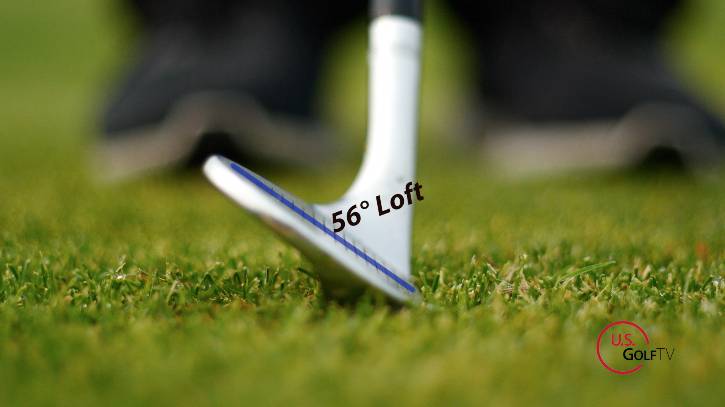
Each club in our golf bag has a standard effective loft. Wedges have the highest while our putters usually have the lowest standard loft. But, we as golfers can change the effective loft of every single one of our clubs.
If I lean the handle and shaft forward towards my lead hip, the effective loft of the club goes down. This move forward also removes the bounce of the golf club. Vise versa, if I move the handle back towards my trail hip, loft and bounce is added to the club.
Both of the moves described above can happen at any time in our swing or chip shot. We can pull on the handle of the club in transition and drastically lower the loft. On the other hand, we can also release the club too early at impact or fall back in the downswing to add loft.
What Role Do the Grip and Setup Play?
We can also change what the effective loft of a golf clubhead is by changing our grip. A really strong grip will cause a player to deloft the club at impact. A weak grip will allow a player to add loft in the swing.
The last way we can change the effective loft of a club is in our setup. If you close your club face at address, the loft will go down. Open the club face and the loft increases.
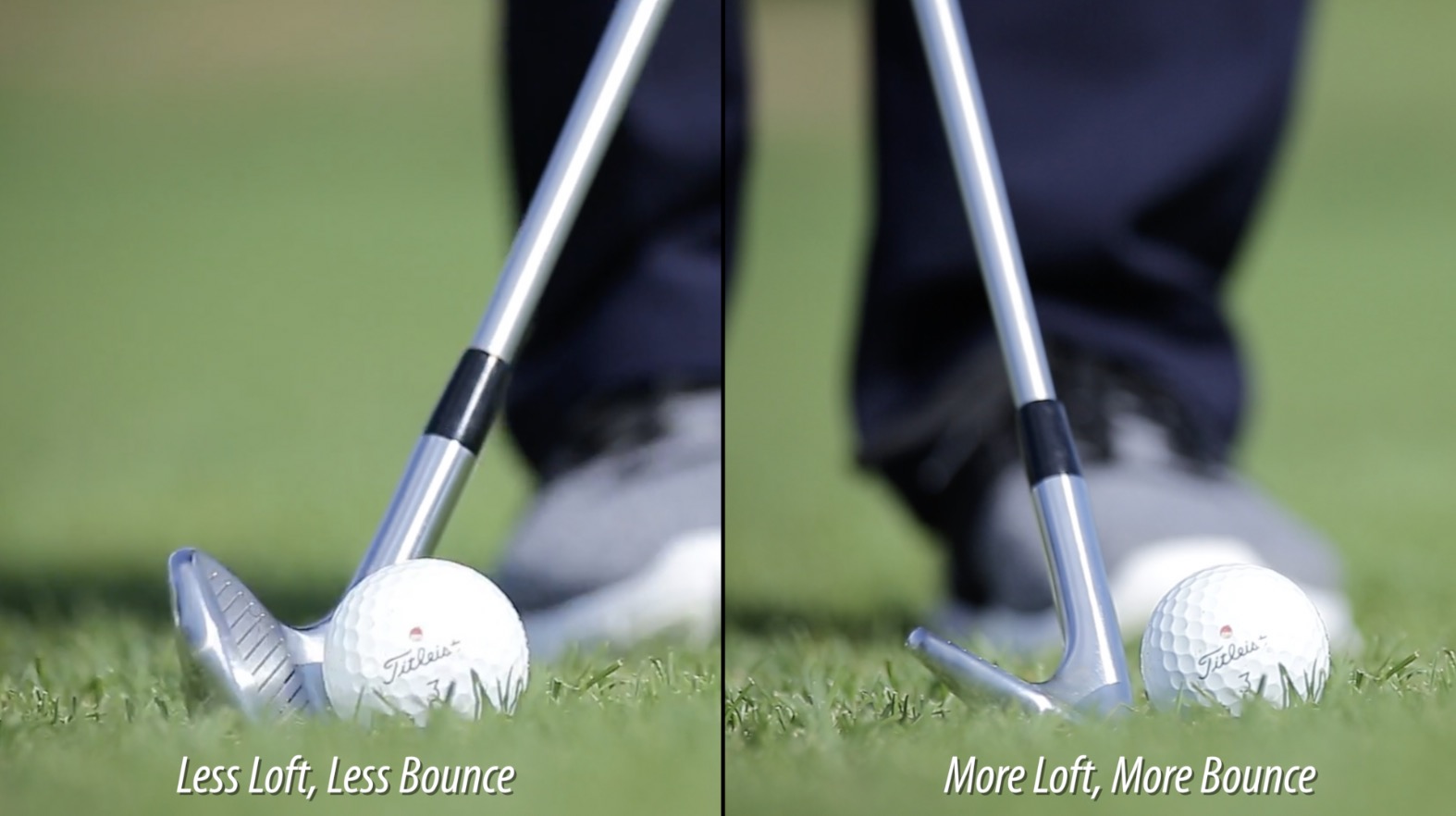
As you can probably tell, the effective loft has the most effect on the trajectory and launch angle of a golf shot. The more effective loft, the higher the ballflight. Another fun fact about loft: the lower the loft of the club, the more the start direction of the ball is affected by face direction at impact.
Loft is so essential in chipping because that high loft is what helps us create a high launch angle. And we need that high launch angle to pop the ball up and onto the green. Because wedges are already designed with loft, it can be easy for amateur golfers to forget that they have a role to play in maintaining effective loft at impact.
This is where the most common chipping mistake comes in.
The Big Mistake You Don’t Know You’re Making
First, let’s go over the proper setup of a chip shot. There are three things I look for when watching someone setup for a chip. One, I look for a narrow stance that is slightly open to the target.
Second, I look for their weight to be more on the lead foot (about 70 percent left). Lastly, I want the player to have what I call neutral hands. This means the player’s butt end of the handle is pointing at their belt buckle. (we have several golf instruction videos on chipping that give great tips for setup.)
While most golfers know to hold their club in a neutral position at setup, they make the mistake of working the clubhead too far inside on the takeaway. In other words, as they swing back, they bring the clubhead around towards the body instead of swinging straight back. There are two common consequences to this habit.
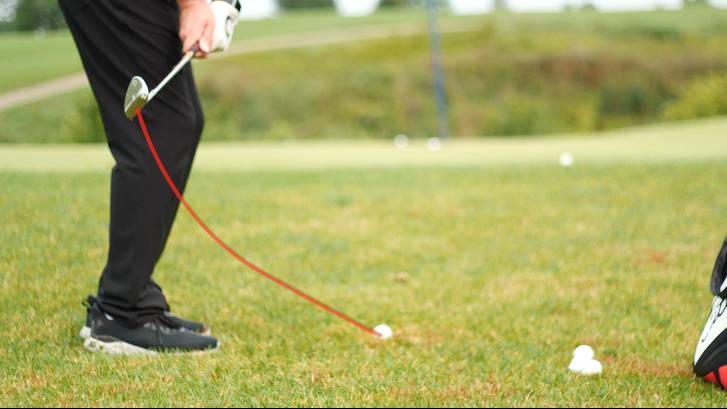
The Takeaway Mistake
First, working the clubhead around and inside changes the shape of the entire swing, moving the low point of the swing farther back behind the ball. If you find yourself frequently chunking or topping the golf ball, it’s because the lowest point of your swing happens too soon.
And more often than not, an early low point is caused by bringing the clubhead around and in.
The second consequence is a bit more complicated but incredibly crucial. Often, if you’re working the clubhead inside on your backswing, this means you’re tilting the angle of your club. You’ve essentially undone the neutral position you had at setup, ultimately delofting the clubface.
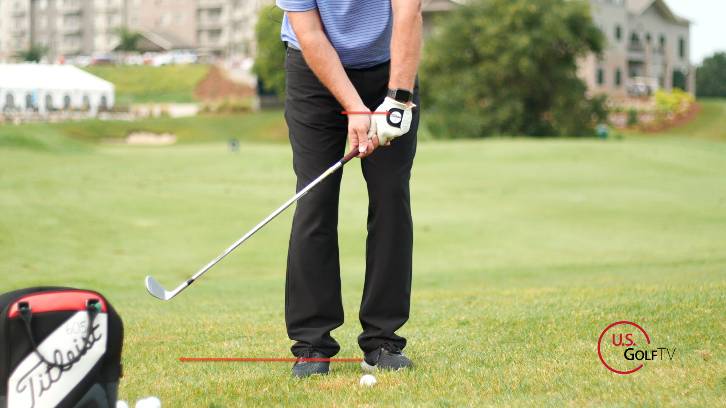
As mentioned before, effective loft can be changed before or during the golf swing. This mistake happens during the swing and can be much harder for a player to diagnose.
Now, a lot of golfers instinctually realize that they’ve eliminated the loft by tilting the club. So, they attempt to counter the loss of loft by hinging the club and speeding the clubhead on the downswing. The result is a shot that I call “hot.” It feels solid, but the golf ball bounces on the green and runs far beyond the target instead of landing soft and rolling out like a putt.
Since the loft of the club has been removed, the ball will come out lower with less spin than a normal chip struck with a neutral handle.
Quick Tip
Before we get to the main solution, try hitting some chip shots with only your trail hand on the club. Notice how the club wants to release and work ahead of your hands. It is very hard for a player to remove the effective loft of the club when swinging only with the trail hand. This will also start to remove the “in and around” takeaway.
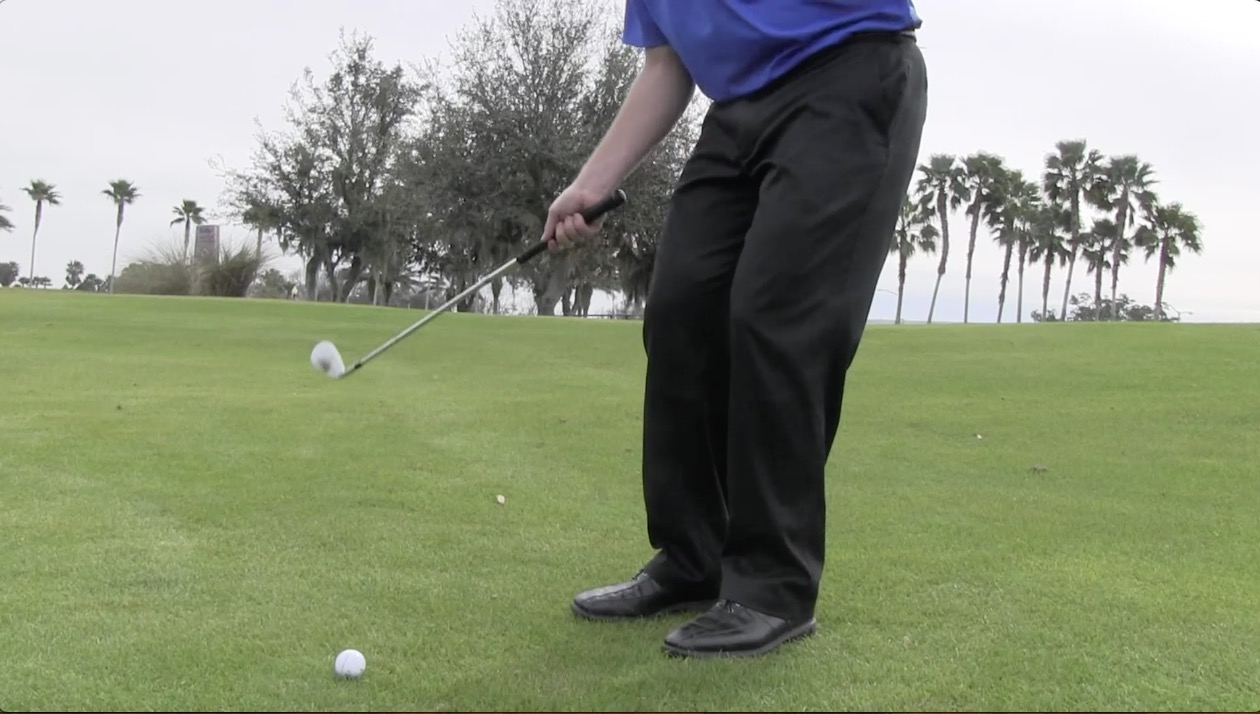
You can see how this one simple habit on the takeaway could be sabotaging your chip shots and adding unnecessary points to your score. Fortunately, there’s a pretty quick fix.
One Simple Solution
The idea I’m about to share may seem too basic to have any real impact on your chipping. But trust me. I’ve shared this advice with everyone from first-time golfers to touring professionals, and the results are always significant.
First, let’s figure out if you’re even making this mistake to begin with. It’s difficult to note the location of your clubhead in the backswing because you’re not looking in that direction. It’s far easier to be aware of your club handle and hands.
Take your backswing and notice what happens to the butt end of your golf club. Are you moving it in the same direction as the clubhead, away from the target? Or do you find that the butt of your club tilts towards the target as the clubhead moves away?
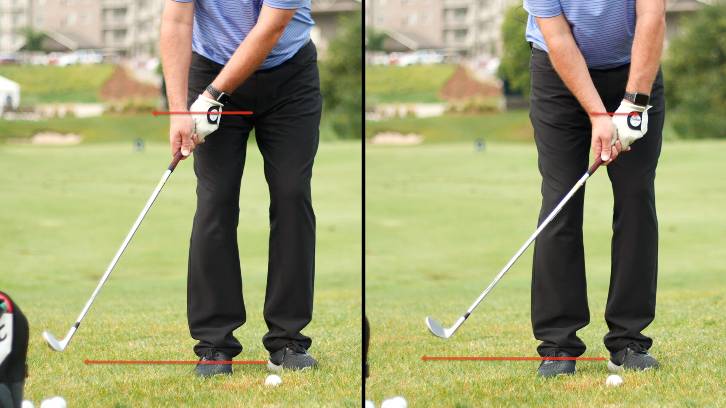
If you’re tilting the club handle in the opposite direction of the clubhead, this means you’ve fallen into the classic trap of working the clubhead around and in. You are likely to chunk or top the ball, or hit a chip shot that’s a little too hot.
The Fix
To correct this, all you have to do is focus on moving the handle and the clubhead together in the same direction on the backswing. Pay attention to your hands. They should maintain the same neutral position they had at setup.
Don’t hinge at the wrists; just use your body to swing the club straight back. This simple adjustment will help you maintain the shape of your swing and ensure effective loft. You will stop chunking the ball, stop topping the ball, and finally get that soft landing on the green.
Another good way to visualize this new move is to lay two alignment sticks on the ground behind you. The first stick should be on the target line and pointed straight at your target. The ball is then placed a foot in front of the stick. The second stick starts by your right foot (for right handed golfer) and is angled to point at the target.
Now that the sticks are on the ground behind you, try working the clubhead back on the line by your golf ball and watch where your hands go. If your hands work out towards the target line you have delofted the club. Make sure your hands work over the stick that is by your foot. This will allow the club to work out and the hands to work in a neutral position for the entire chip shot.
Let’s Recap
If you’re like a lot of golfers, your struggle with chip shots can be resolved by identifying and correcting one common mistake: working the clubhead in on the takeaway.
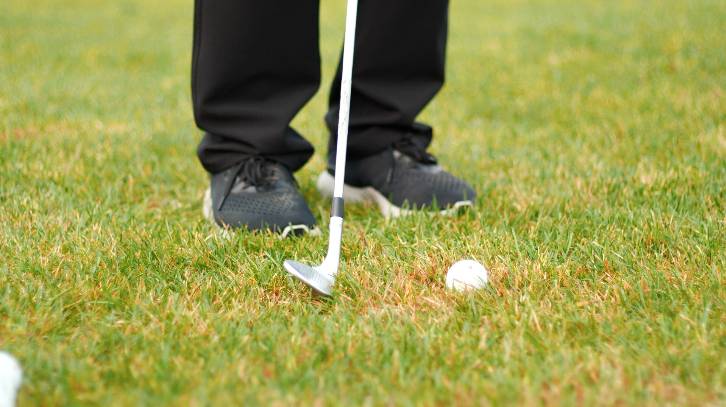
The key to maintaining the shape of your swing and maintaining that all-important effective loft is simple. As you swing back, keep your hands in the neutral position, ensuring that the butt of the club and the clubhead are both moving away from the target.
It’s a minor adjustment that comes with a major payoff. Once you’ve made this correction, you’ll see immediate results. No more chunking. No more topping. And no more hot chip shots that run away from the target.
The combination of this move and the understanding you now have of effective loft will go a long way in improving your short game. Remember that we can still change the effective loft of our clubhead during the setup of our chip shots. If you are successfully performing the drill and still having issues with the ball rolling out too far, make sure the club is not closed at address.
Short game is a huge separator in golf. If an amateur golfer can consistently get up and down, they will see a tremendous improvement in their overall game.
Continue to always be aware of your effective loft during your chip shots and you’ll finally have better control and lower scores!
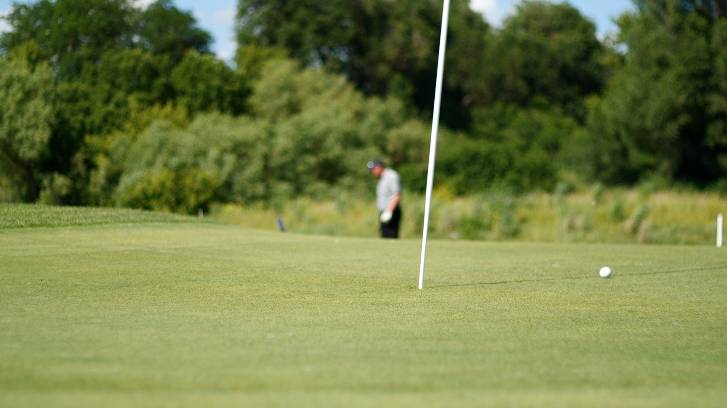
Has This Been Helpful?
Are you looking to improve your chipping? Does this advice make sense? Do you disagree or have tips of your own?
Join us in the comments for discussion and debate. I’m always happy to hear from you and eager to address your questions . . . or your difference of opinion! At the end of the day, we are hoping to help you improve your chipping.
And remember to follow us Facebook, Twitter and Instagram for more little-known tips and tricks to transform your game. Our primary goal is always to help you play better golf. And for helpful video tips, subscribe to our YouTube channel!


great Love this incite. I’ve had chipping yips until now..
Lee R.
Redmond Oregon
Thanks for the comment Lee!
Here is another great video that should help those chipping yips: https://youtu.be/OHj0HCfgn5M
Let us know if it helps, and be sure to subscribe to our YouTube channel for more great tips like this!
Great chipping tips, can you give more info on body movement through the chip shot? Chest, arms and leg movements, thanks
Scott Williams
scottw@npgcable.com
Hi Scott, thanks for the comment. I would recommend starting with this video:
https://youtu.be/OHj0HCfgn5M
It covers club selection, setup/ball position, and swing motion. Hope it helps!
Thank you Todd. I will practice this and look to have my chipping improve.
Much appreciated.
Wayne,
Hamilton, Bermuda.
Wayne, our pleasure! We need to do a golf school in Bermuda! 🙂
Nice article! Here’s a question. I have always thought that opening the face would send the ball off to the right, so, when you open the face do you have to modify your swing at all? Or, was I wrong in my assumption?
Bradley, great question. Yes, the balls starts based on the face at impact, therefor you do want to move your aim slightly to the left for a chip shot. You are spot on!
Chipping article is great, but all of the shots seem to be on a relatively flat surface or on a slight incline. Many of the courses, especially near a coast have what we call “turtle back” greens. The chips I really have trouble with are those where the ball is sitting somewhere on a fairly steep upslope. What happens is the chip either pop up way short and roll back, or get bladed and go off the other side. Would love to see an article on these type of chips. Do you still use a high loft, where is the ball in your stance, what is the weight distribution of your feet, how about short sided chips vs longer chips? Thanks
your teaching has improved my short game 100%, to the point if i don’t get up and down from around the green i’m disappointed.
Sal,
You made our day…this is awesome! Hope you joined our email list…some great content we send out.
Ernie,
Great question. Here is a good video on how to chip of tight lies, this is a good place to start https://youtu.be/fwrrd1WnXks
I like the tip, but please take it to a uphill lie to a distance pin. I seem to have trouble with the set up and effective loft on the uphill lie. . Difference in close pin and distance pin.
JR, good question. Here you go https://youtu.be/SjAztVoXOj4
How to correct In the heavier green side rough? Having problems with the the ball rolling up the face using that technique —-Which had worked well for me in lighter rough. Ie. I want to deloft and swing faster to compensate in the deeper rough!
Is the grip for chipping the same as a full swing grip? I have heard the butt of the club should be aligned with the “lifeline”
In the palm of the left hand. Or is it just individual preference?
Been watching Todd’s videos and he has a way of keeping things simple and I’m able to implement them right away. The chipping keys have improved my confidence and the results have been fantastic. Now I just need to get the rest of my game together, but am thankful my chipping is finally where it should be.
I got some instructions from a teaching pro about driving with a focus on your right thumb pushing through the swing and your hip turn is what squares up the club. Have you heard of this and do you think an 18 handicap like myself should try it?
Thank you, and your tips are working well for me. However I seem to need to open up my lead foot a bit to keep on line.
An observation in the two shots in the video at 2:29 and 3:00 – it looks as if as you start your swing motion you actually move your hands forward of center with the butt end of the club forward towards the hole instead of into the backswing immediately.
Bob,
Thanks for posting. There is a slight move forward of the shaft as a “trigger” to start the swing. The key here is to not have too much forward press at address or in the swing. Hope the information is helping your game!
Stephen,
Appreciate the kind words and great news on the chipping. I have never heard of the right pushing through impact? Doesn’t mean it will not work, just not familiar with the concept.
Good question. For short game shots we do not mind the club more in the palms of the hands. However for full swing we like to see the club more towards the fingers. Hope that helps.
I have followed you method club straight back not to lose the loft but, I’m blading the ball more times then I hit a good chip. I don’t de-loft the club but I do get hot shots also. What do I need to do to fix that.
Sal,
Thanks for posting. Here is a good video on that topic https://youtu.be/VT28y-DAC6k